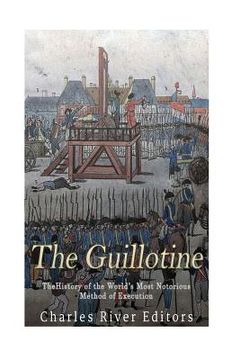The Guillotine: The History of the World's Most Notorious Method of Execution (en Inglés)
Reseña del libro "The Guillotine: The History of the World's Most Notorious Method of Execution (en Inglés)"
*Includes pictures *Includes contemporary accounts describing the use of the guillotine *Includes online resources and a bibliography for further reading *Includes a table of contents "But here I should imagine the most terrible part of the whole punishment is, not the bodily pain at all-but the certain knowledge that in an hour, then in ten minutes, then in half a minute, then now-this very instant-your soul must quit your body and that you will no longer be a man-and that this is certain, certain!" - Fyodor Dostoyevsky, The Idiot The Guillotine. Its very name recalls scenes of horror during the French Revolution, as nobles lost their heads while gangs of people cheered and Madame Defarge knitted. Some of history's most famous people lost their heads at the guillotine, including Marie Antoinette, King Louis XVI of France, and Robespierre, and the apparatus is immediately recognizable across the world, not just for its appearance but for all the stories it featured prominently in. However, the truth behind this device is much more complicated than its short-lived use during France's Reign of Terror. For one thing, societies have been executing people since ancient times and have used various devices, the guillotine being just one. Even as early as the 13th century, there were moves among some to make the arduous task of state-sanctioned executions quicker and easier, and in time, the evolution of various devices helped bring about the invention of the guillotine. Though many their names have now faded into history, both the instruments of the past and the people who used them were the parents of this monstrous device. But a funny thing happened along the way as people became less and less enamored of killing each other, even for those who had themselves committed murder. As the Age of Enlightenment spread in the mid-1700s, so did a sense that government should not take lives at all, or if they did, that they should do so as quickly and painlessly as possible. Thus it was that the guillotine was created, not to hurt others so much as to dispatch those condemned as painlessly as possible. It is but a sad coincidence that its design was perfected on the eve of one of the bloodiest eras in French history; had it been developed at another point in time, it might very-well have been hailed as a merciful way to mete out justice. Like all important devices, the guillotine did not remain unchanged during its centuries of use. Its design was periodically tweaked for decades until the latter half of the 19th century, when it was completely redesigned, likely in light of a growing hostility toward capital punishment in general and beheadings in particular. By this time, such notable Frenchmen as Victor Hugo had spoken out against the right of the state to take a human life. Even the Sanson family, who had served as France's executioners for more nearly 200 years, had given up their work, and it fell to others to master the new apparatus. These men would be increasingly maligned for their work as a more civilized world insisted that it was not for the state to conduct executions. That said, it often surprises people to learn that the guillotine remained in use through the middle part of the 20th century, outliving other barbaric practices like slavery by nearly 100 years. Though the government outlawed public executions in the mid-1930s, men and women continued to be beheaded in the name of justice long after the end of World War II. But ultimately, the times were changing, and Nazi and Japanese atrocities had opened the eyes of many to man's ability to hurt fellow man. Killing was even less attractive to those who had already killed in the name of patriotism, and their voices raised, higher and higher, until ultimately the device that had dispatched royalty and paupers alike was finally used for the last time. As one author wrote, "May it never be used again."

